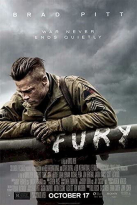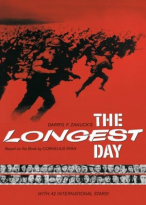The Best War Films of All Time
The CommRadio Arts & Entertainment Staff revisits some of its favorite war films.

“Hacksaw Ridge”
“Hacksaw Ridge” is one of the grislier war films to come across movie screens in a while. Showing no mercy about what the movie is trying to represent, the film is about Desmond T. Doss, a conscientious objector during WWII.
On the road to Okinawa, Doss is constantly chastised by his fellow soldiers for refusing to carry a weapon due to his religious beliefs. After constant arguments and even a court case, Doss was cleared for action, even if his superiors thought he was just going to be fodder without a defense.
That wasn’t the case. Doss saved the lives of countess American soldiers by sneaking around the battlefield and carrying them to the ridge, where he lowered them down for medical attention.
The movie is extremely grim and holds nothing back while it tries its best to represent war as the absolute nightmare that it is. Of course, there will always be the dramatization of Hollywood, but this one is one of the best.
It leaves the audience with the to-be-expected grim feelings after the movie is over, especially when Doss himself is injured and brought off the ridge clutching his bible. His story, however grim it may be, is one of inspiration.
Featuring Andrew Garfield as Doss, Garfield does a magnificent job as his character and really puts forth all he has for the role.
As far as war movies that are true stories go, this ranks as one of the best in a long time. - Colton Pleslusky

“Fury”
Though it is not a true story itself, “Fury” is based off a collection of real-life tank stories sewn together.
Set during the end of WWII, “Fury” sees characters played by Brad Pitt, Shia LaBeouf, Jon Bernthal, and Logan Lerman crash through Germany in their Sherman tank - which is lovingly named Fury.
The movie does a great job showcasing the psychological differences between soldiers who have seen many theaters of combat vs brand new soldiers fresh from the United States.
This is another film that doesn’t try to hold back. Obviously as a war film, violence is the center point of it, and the film wants to represent what war is. It is brutal and not forgiving; “Fury” represents that well.
What makes this movie standout in its genre is it is all about tanks. The tank combat is well represented and is thrilling to watch, from the outside-the-vehicle scenes with shells crashing into the ground to the inside views of the crew working together.
Fury is certainly one of the must watch war movies of the past decade. Filled to the brim with action, sorrow, and tanks, this movie brings to life an amalgamation of real-life tank stories in an impressive way. - Colton Pleslusky

“The Longest Day”
War is a broad and complicated topic. Throughout “The Longest Day,” different perspectives are witnessed over the course of one of the most important operations of World War II, D-Day.
In order to accurately depict how extensive and crucial Operation Overlord was, the film is almost three hours long, and needed five directors for the different episodes of the story.
While the well-known beach landings are included, the film also portrays the roles played by paratroopers, the French resistance, naval support and meteorologists.
Over the course of the movie, uncertainty was presented as a reoccurring theme. Soldiers follow their orders to acquire a position and then hope that they get reinforcements. Some individuals get lost during the operation; others get wounded or killed.
Some of the characters that we are introduced to in the beginning of the story change in response to the ordeal. Richard Beymer’s character makes plans for what he will do in France before the invasion, and at the end of the film, he ends up lost and confused.
Similar events occurred in the actual war.
“The Longest Day” is based on historical events as depicted in Cornelius Ryan’s novel, but his screenplay has additional moments added in to fill the blanks for filming purposes.
It does not include the gore and horror of the more modern depictions of wars; rather, it focuses on the importance of the story, and the people involved.
While telling the history of what had to happen in order for D-Day to succeed, the movie includes an allegory for the chaos that is war. Near the end of the story, an English pilot proclaims, “He (German soldier) is dead, I’m crippled (severe leg wound), and you’re lost (American paratrooper).”
Cinematically, the film is excellent, with top-notch photography and direction, and an all-star cast. The black and white photography adds to the period setting. – David Myers

“Tora! Tora! Tora!”
It was said that history is told from the perspective of the victor. In “Tora! Tora! Tora!”, viewers get to witness two sides of the event that brought the United States into the second world war.
The film follows historical accounts telling the story of the bombing of Pearl Harbor. It begins with the motive behind the plan and the attempts between the Japanese and the Americans to avoid conflict.
When the embargo on raw materials was placed, the Japanese realized they had no choice but to find alternate sources and eliminate the threat of the American pacific fleet.
We know what happened next.
As both sides of the story are told, the film includes moments that remind the audience that although the Japanese were our enemy in the war, they were human.
The commanders were shown to have doubts about the mission. Pilots laughed at jokes. Even a fisherman complained when planes came too close to the water and scared the fish.
From the perspective of the United States, the bombing was a catastrophe. On the opposite side, the Imperial navy saw the attack as a success. The fleet suffered heavy damage along with the airfields. However, the American aircraft carriers, which were the main targets, where not present during the air raid.
The film ends with Yamamoto’s realization about waking the sleeping giant that is the United States and filling it with fury. This encapsulates the feeling that they had one chance to succeed but fell short and now must face the consequences. – David Myers
Colton Pleslusky is a junior majoring in telecommunications. To contact him, email csp5289@psu.edu
David Myers is a junior majoring in telecommunications. To contact him, email at d12amyers@gmail.com
About the Contributors

David Myers
Fourth-year student / Telecommunications
David Myers is a fourth-year student from Watsontown, Pennsylvania. He is a member of the student-run radio station CommRadio at Penn State. He is in the arts & entertainment department.

Colton Pleslusky
Fourth-Year / Telecommunications
Colton S. Pleslusky is a fourth-year from Aliquippa, Pennsylvania majoring in telecommunications at Penn State. He is a director and writer for the CommRadio Arts & Entertainment Department as well as the host on Nittany Stories and a co-host on Nittany Record Club alongside Emily McGlynn. He does behind the scenes tasks, including directing, producing, programming and more for the Centre County Report. To contact him, email .(JavaScript must be enabled to view this email address) or .(JavaScript must be enabled to view this email address).








